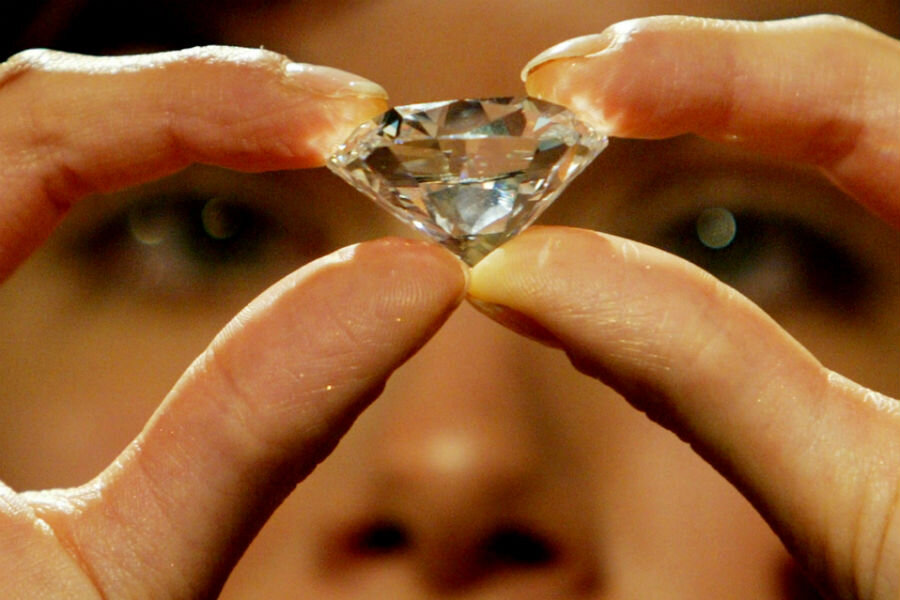Could brute force and diamonds lead to metallic hydrogen and floating cities?
Loading...
It is the universe's most abundant element in its most elusive form: metallic hydrogen. The US space agency has gone so far as to send a probe to Jupiter to investigate the mysterious material, thought to be somewhere under the planet's surface.
But now new research says the lab may be as far as scientists have to go to obtain the material.
In a letter to the journal Nature, a team of physicists from the University of Edinburgh report that an experiment has brought the researchers just a step away from metallic hydrogen.
"We think we've reached a state of the material that is probably the precursor to metallic hydrogen," Ross Howie, a co-author of the letter, said in an interview with the BBC.
"If you compare what we've observed experimentally with what's theoretically predicted for metallic hydrogen – they're very strong similarities between the two," he added.
This elusive substance, if efficiently produced, could create an awesome future on Earth.
Physicists have been puzzling over how to forge the element into a superconducting metal since it was first theorized 81 years ago. Metallic hydrogen may be the only superconductor that could conduct electricity without resistance at room temperature.
Superconducting at room temperature "is still yet to be achieved with any material," said Dr. Howie.
Metallic hydrogen also has the potential to be remarkably stable. Though it is created under extreme pressure, it does not require such pressure to maintain its form.
These unique properties could someday craft lightweight building materials for floating ocean cities, and replace liquid hydrogen in rocket fuel, effectively quadrupling the propellant and thrust of our most modern fliers, Nature reported in 2012, when another team of physicists controversially announced they had observed superconducting hydrogen.
Howie and his co-authors conducted their experiment similarly to the contested experiment from four years ago, using a diamond anvil cell. By applying "brute force" on a large lever to the backs of two diamonds, the twin tips – each about the width of a human hair – meet and compress the infinitesimal hydrogen. Co-author Philip Dalladay-Simpson described the volume of hydrogen used "on the order of a red blood cell."
The pressure put on the element sample is 3.2 million to 3.8 million times higher than Earth's atmosphere at sea level, or about the amount of pressure that could be expected at the core of the planet.
In that particular pressurized state, the scientists say, the hydrogen appears to be part-molecular and part-atomic. Nudging the pressure up could result in metallic hydrogen, the researchers suggest, though they are skeptical that diamonds are strong enough for the job.
The experiment provides new evidence of what pressure it may take for the actual metallic hydrogen phase to occur at room temperature.
The limitations of the experiment, according to Nature, are the microscopic sample sizes provided by diamond anvil cells, and the proclivity of high-pressure experiments to come with errors, or researchers "fooling themselves" in uncertain conditions.
Still, according to Professor Eugene Gregoryanz, who led the new research, the experiment marks a significant step forward.
"The past 30 years of the high-pressure research saw numerous claims of the creation of metallic hydrogen in the laboratory, but all these claims were later disproved," he said in an interview with Phys.org. "Our study presents the first experimental evidence that hydrogen could behave as predicted, although at much higher pressures than previously thought. The finding will help to advance the fundamental and planetary sciences."








